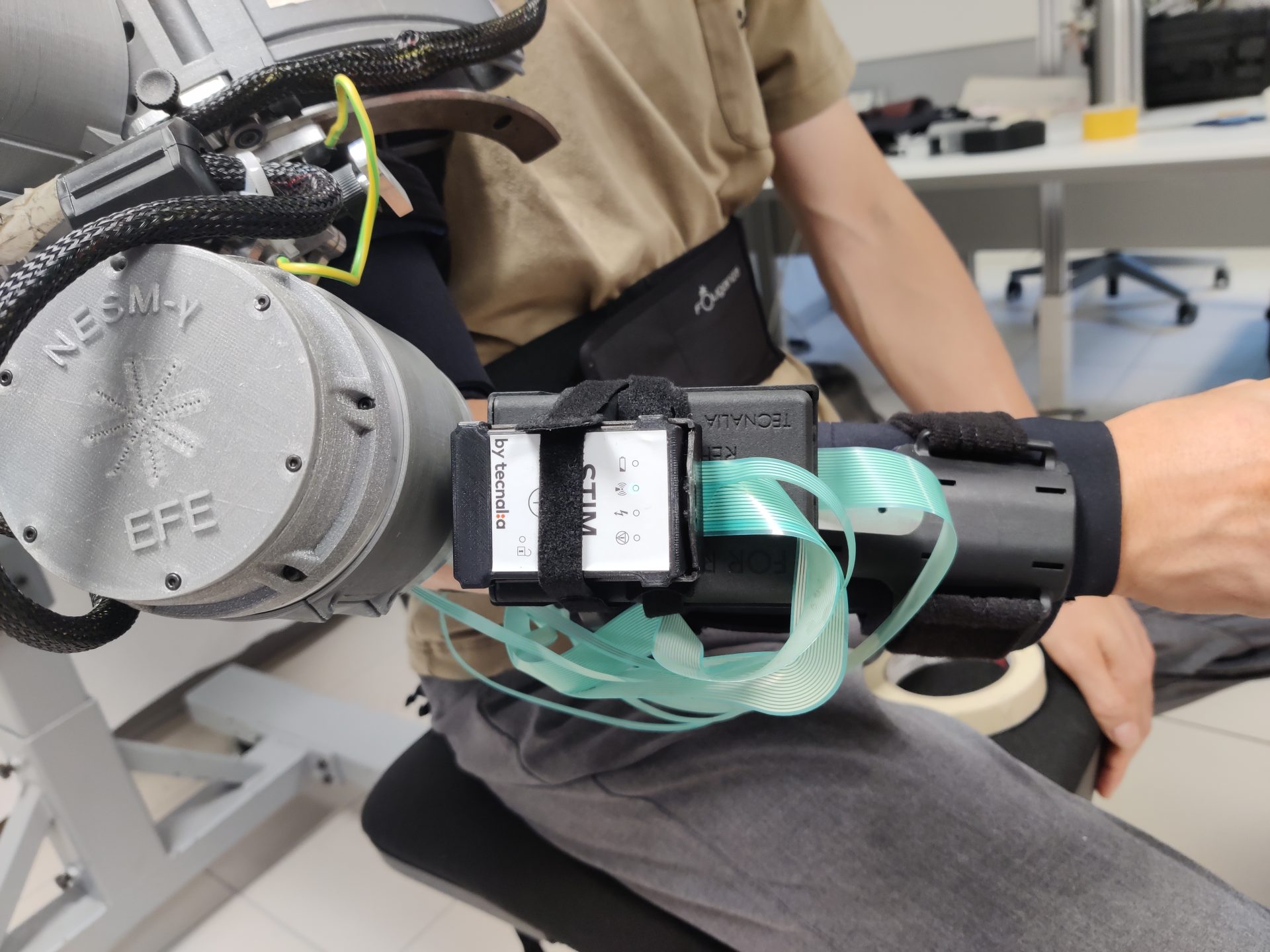"New hybrid neuroprosthetic solutions combine active and passive exoskeleton technologies with functional electrostimulation (FES)"
The future of stroke recovery: hybrid neuroprostheses
The main key players in innovation for the neurorehabilitation sector met at the Miguel Hernández University of Elche where they presented the latest developments in technologies applied to the neurorehabilitation sector and the needs of clinical teams.
Our colleague, Igone Idígoras, TECNALIA's Health Projects Manager, presented two of the lines of research in the field of neurorehabilitation in which TECNALIA is involved: the European REHYB project and the NEWRO initiative.
Igone coordinates TECNALIA's participation in the European REHYB initiative in which major advances and new solutions are being developed for hybrid neuroprostheses aimed at upper limb rehabilitation and assistance for stroke patients. These solutions combine active and passive exoskeleton technologies with functional electrostimulation (FES) and the development of cooperative control strategies, which generate assistance according to each patient's individual needs and evolution.
60% of stroke survivors whose upper limbs are affected do not fully recover function and 30% of those severely affected have no other option
In this context, at REHYB, the aim is to move towards solutions that adapt to the needs of each patient and their evolution during the rehabilitation process. The aim is to provide the patient with a personalised rehabilitation therapy, which exploits the residual function that the patient may have or recover during the rehabilitation process.
Preliminary studies indicate that the efficiency of upper limb rehabilitation in post-stroke patients can be improved if the users' motor functions are actively controlled by functional electrical stimulation (FES) in addition to the guidance provided by an active exoskeleton. These hybrid systems are advantageous because the users' own muscular activity initiates the movements, and they are not just passively guided through an external force (exoskeleton).
The aim is to generate a hybrid system that maximises training efficiency during rehabilitation - all while offering a pleasant user experience and supporting patients in daily activities.
After several months of research, Idígoras explained some of the next steps at this professional conference, which include the integration of the final prototypes and clinical trials with doctors and patients.
Research into an innovative hybrid brain-machine interface will start soon
She has also revealed the lines of a relevant project that will be launched by TECNALIA at the end of 2023: an innovative hybrid brain-machine interface.
It is NEWRO, a motor rehabilitation system for stroke patients of all levels of disability, including chronic and more severe patients. This system links the patient's intention to move, decoded through electrical signals from their brain and/or muscles. This is done with the movement of an exoskeleton attached to their paralysed arm, thus activating the neuroplasticity mechanisms by which humans are able to relearn a lost function after a stroke.
Great advantages for patients and clinicians
For patients, this system is an opportunity to regain the mobility of their upper limb. They can use it again in daily tasks, partially or fully reducing their degree of dependency, even in the most severe cases that currently lack effective solutions.
For clinicians, it is an opportunity to offer efficient and effective treatment with easy-to-use technology. They can treat several patients simultaneously, increasing efficiency and reducing staff costs.

